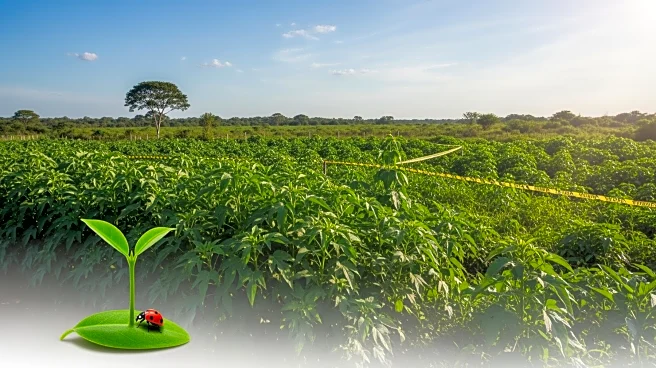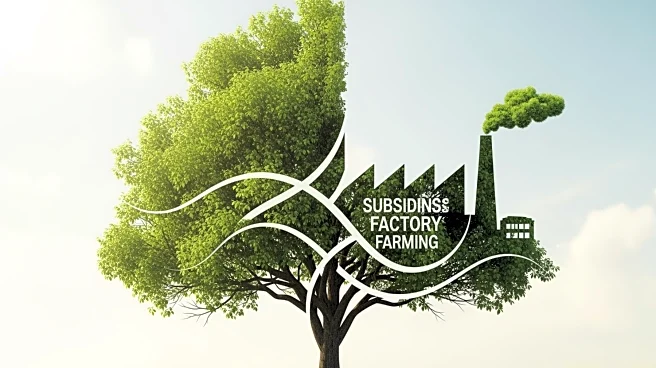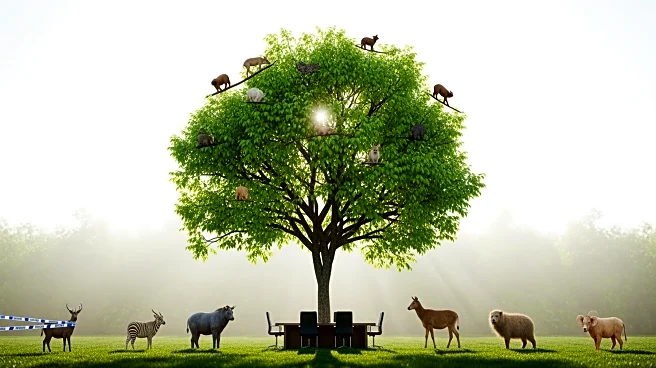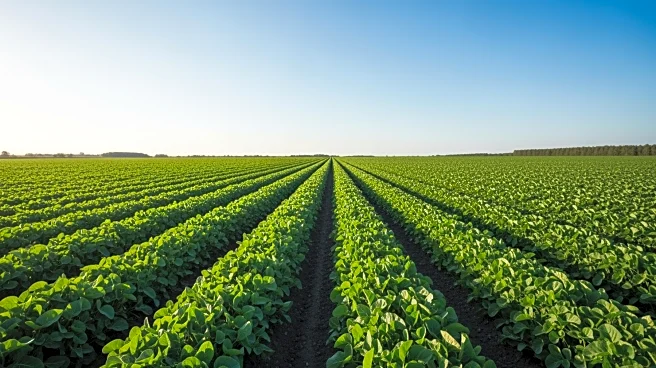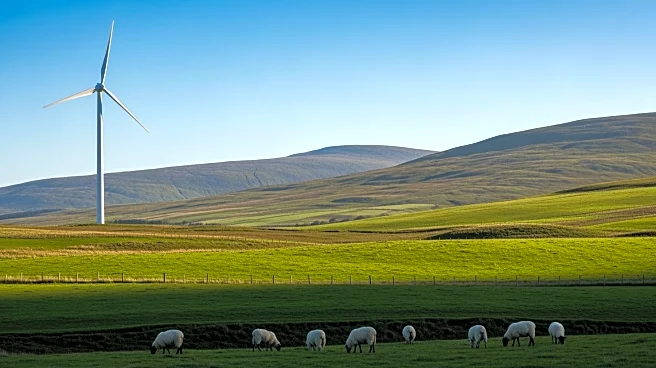What's Happening?
Animal agriculture is under scrutiny for its significant environmental impact, particularly in terms of greenhouse gas emissions and biodiversity threats. Modern agricultural practices, such as the use of pesticides and overgrazing, have been identified
as detrimental to biodiversity, especially in protected areas. However, traditional farming methods may offer conservation benefits. The Climate Change Committee (CCC) in Scotland has suggested that reducing livestock numbers could significantly cut emissions, proposing a reduction from 7.6 million tonnes in 2025 to 5.1 million by 2035. Agroforestry, which involves planting trees alongside livestock, is highlighted as a potential method to offset carbon emissions. Despite these strategies, deforestation remains a critical issue, particularly in tropical regions, affecting climate resilience and biodiversity.
Why It's Important?
The environmental impact of animal agriculture is a pressing issue with global implications. Livestock emissions contribute significantly to greenhouse gases, making it a critical area for climate change mitigation. The CCC's recommendations, if implemented, could lead to substantial reductions in emissions, benefiting the environment and aligning with global climate goals. However, the challenge lies in balancing agricultural productivity with environmental sustainability. Reducing livestock numbers could impact food supply and rural economies, necessitating careful consideration of economic and social factors. Agroforestry presents a promising solution, offering a way to maintain agricultural output while enhancing carbon sequestration and biodiversity.
What's Next?
The Scottish government faces decisions on how to implement the CCC's recommendations. While reducing livestock numbers is a suggested strategy, it may face resistance from the agricultural sector. The government will need to explore alternative methods, such as increasing tree planting and improving farm management practices, to achieve emission reduction targets. Additionally, there is a need for policies that support farmers in transitioning to more sustainable practices without compromising their livelihoods. The success of these initiatives will depend on collaboration between government, industry, and environmental groups to develop and implement effective strategies.
Beyond the Headlines
The debate over livestock reduction highlights broader ethical and cultural considerations. Livestock farming is deeply embedded in many rural communities, and changes to this industry could have significant social impacts. There is also a need to consider the role of consumer behavior in driving demand for animal products and how shifts towards plant-based diets could contribute to environmental goals. Furthermore, the potential for agroforestry to enhance biodiversity and ecosystem services presents an opportunity to rethink agricultural landscapes in a way that supports both human and environmental health.




